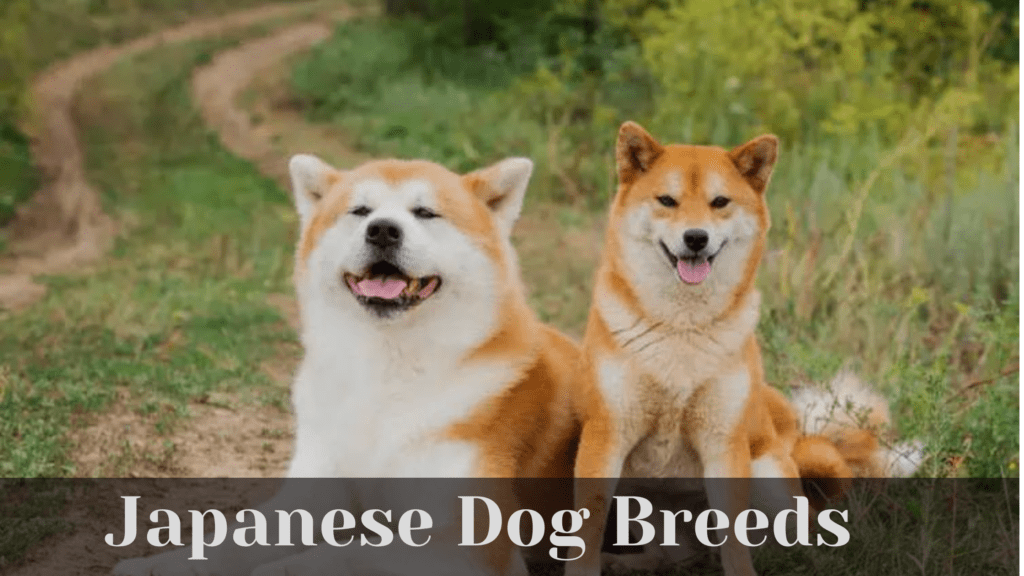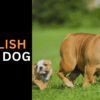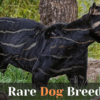Top Japanese dog breeds:
Japan is home to several distinctive and beloved dog breeds. Here are a few notable Japanese dog breeds:
Shiba Inu:
The Shiba Inu is a small to medium-sized dog breed originating from Japan. They are one of the most popular Japanese dogs breeds worldwide and have gained significant popularity in recent years, especially through social media.
Here are some key characteristics of the Shiba Inu breed:
Appearance:
Shiba Inus have a fox-like appearance with a curled tail and an alert, intelligent expression.
Size:
Shiba Inus are considered a small to medium-sized breed, typically weighing between 17 and 23 pounds and standing 13.5 to 16.5 inches tall at the shoulder.
Temperament:
Shiba Inus are known for their spirited and independent nature. They are loyal and affectionate to their owners but can be aloof or reserved around strangers. Shiba Inus are intelligent, curious, and love to explore their surroundings. They have a strong prey drive and may not get along with other small animals.
Health:
Shiba Inus are generally healthy dogs with a lifespan of 12 to 15 years. Like all breeds, they may be prone to certain health conditions such as hip dysplasia, allergies, and eye problems.
Care:
Shiba Inus require regular exercise and mental stimulation to prevent boredom and destructive behavior. They have a thick double coat that requires regular grooming, especially during shedding season.
Akita Inu:
The Akita Inu, often referred to simply as the Akita, is a large and powerful dog breed originating from Japan.
Here are some key characteristics of the Akita Inu breed:
Appearance:
Akita Inus have a strong and imposing presence. They have a large, sturdy build with a broad head, erect ears, and a thick double coat that can come in various colors, including white, brindle, and various shades of red.
Size:
Akita Inus are large dogs, with males typically weighing between 100-130 pounds (45-59 kg) and standing 26-28 inches (66-71 cm) tall at the shoulder. Females are slightly smaller, weighing between 70-100 pounds (32-45 kg) and standing 24-26 inches (61-66 cm) tall.
Temperament:
Akita Inus are known for their loyalty, courage, and dignified nature. They are typically reserved and protective of their families, making them excellent guard dogs. Akitas can be independent and strong-willed, so early socialization and consistent, firm training are essential to ensure their good behavior.
Health:
Akita Inus are generally healthy dogs with a lifespan of 10-15 years. However, they may be prone to certain health issues, including hip dysplasia, progressive retinal atrophy, autoimmune disorders, and certain types of cancer. Responsible breeders conduct health screenings to minimize the risk of these conditions.
Care:
They are moderate shedders and tend to “blow” their coats seasonally. Akitas also require regular exercise to keep them physically and mentally stimulated.
Japanese Spitz:
The Japanese Spitz is a small to medium-sized dog breed originating from Japan. Here are some key characteristics of the Japanese Spitz breed:
Appearance:
Japanese Spitz dogs have a distinctive appearance with a pure white, dense, and fluffy double coat. They have a foxlike face, erect ears, and a plumed tail that curls over their back. They have a balanced and compact build, with a height ranging from 10 to 16 inches (25 to 40 cm) at the shoulder.
Temperament:
Japanese Spitz dogs are known for their friendly, outgoing, and affectionate nature. They are social dogs that enjoy being part of the family and tend to get along well with children and other pets when properly socialized. They are intelligent and eager to please, making them trainable and responsive to positive reinforcement training methods.
Energy Level:
Japanese Spitz dogs have a moderate energy level. They enjoy daily exercises, such as walks, play sessions, and interactive games. Regular exercise helps keep them physically and mentally stimulated and prevents boredom or destructive behaviors.
Health:
Japanese Spitz dogs are generally healthy and have a lifespan of about 12 to 16 years. However, they may be prone to certain health issues such as patellar luxation (knee joint problems), dental problems, and allergies. Regular veterinary check-ups and a balanced diet are important for their overall well-being.
Care:
Japanese Spitz dogs have thick, fluffy coat that requires regular brushing to prevent matting and tangles. They shed seasonally and may require more frequent grooming during those times. Their ears should be checked and cleaned regularly to prevent any buildup of wax or debris.
Shikoku Inu:
The Shikoku Inu, also known as the Shikoku Ken, is a medium-sized dog breed that originated in Japan.
Here are some key characteristics of the Shikoku Inu:
Appearance:
Shikoku Inus have a sturdy and athletic build. They are medium-sized dogs with well-muscled bodies, broad heads, and erect ears. They have a thick double coat that comes in various colors, including red, sesame, and black sesame. Their tail is thick and curls over their back.
Size:
Shikoku Inus are medium-sized dogs, with males typically standing between 18.5 to 21 inches (47 to 53 cm) at the shoulder and weighing between 35 to 55 pounds (16 to 25 kg). Females are slightly smaller, standing between 17 to 19.5 inches (43 to 49 cm) and weighing between 30 to 45 pounds (14 to 20 kg).
Temperament:
Shikoku Inus are known for their loyalty, independence, and strong hunting instincts. They are intelligent, courageous, and have a strong sense of territoriality. They can be reserved and aloof with strangers but are typically devoted and affectionate with their families. Early socialization and consistent, firm training are important to ensure they become well-rounded dogs.
Activity Level:
Shikoku Inus are active dogs that require regular exercise to keep them physically and mentally stimulated. They have a strong prey drive and enjoy activities such as hiking, jogging, and interactive play sessions. Providing them with outlets for their energy helps prevent behavioral issues.
Health:
Shikoku Inus are generally healthy dogs with a lifespan of about 10 to 15 years. However, like all dog breeds, they may be prone to certain health conditions, including hip dysplasia, patellar luxation, and certain eye issues. Responsible breeders conduct health screenings to minimize the risk of these conditions.
Care:
Shikoku Inus have a thick double coat that requires regular brushing to remove loose hair and prevent matting. They shed moderately year-round and have heavier shedding periods seasonally. They are generally clean dogs and do not require frequent bathing. Routine veterinary care, a balanced diet, and regular exercise are essential for their overall well-being.
Conclusions:
In conclusion, Japanese dog breeds offer a diverse range of characteristics, appearances, and temperaments. From popular Japanese Dog Breeds like the Shiba Inu and Akita Inu to lesser-known breeds like the Shikoku Inu and Japanese Spitz, these dogs reflect the rich history and culture of Japan.
Japanese dog breeds often exhibit traits such as loyalty, independence, intelligence, and a strong sense of territoriality. They may require proper socialization, consistent training, and regular exercise to ensure their well-being and happiness. Additionally, responsible breeding practices and health screenings are crucial to minimize the risk of inherited health issues.
FAQ’s:
Are Shikoku Inus good family dogs?
Shikoku Inus can be good family dogs when properly socialized and trained. They are loyal and devoted to their families but can be reserved with strangers. Early socialization and consistent training are important to ensure they get along well with children and other pets in the household.
How much exercise do Shikoku Inus need?
Shikoku Inus are an active breed that requires regular exercise to keep them physically and mentally stimulated. They benefit from daily walks, interactive play sessions, and activities that allow them to use their instincts, such as hiking or scent games. Aim for at least an hour of exercise per day.
Do Shikoku Inus get along with other dogs?
Shikoku Inus have a strong prey drive and may be selective when it comes to interacting with other dogs. Early socialization and gradual introductions are important to ensure they develop good relationships with other dogs. Supervision and caution should be exercised when introducing them to unfamiliar dogs.
Are Shikoku Inus difficult to train?
Shikoku Inus are intelligent and can be trained, but they also have an independent nature. They require consistent, firm, and positive training methods. They respond best to reward-based training techniques and benefit from early socialization and obedience training to ensure good behavior.



